#jehol biota
Explore tagged Tumblr posts
Video
youtube
Can Microraptor Survive in New York City?
Bright Lights, Big City, I'm coming today, NEW YOOOOOOOORK!
#youtube#microraptor#dromeosaur#microraptorine#new york#new york city#nyc#spiderman#cretaceous period#cretaceous#china#liaoning#jiutofang#jehol#jehol biota#raptor#pelham park#central park#speculative evolution#speculative biology#speculative ecology#paleontology#spec evo
6 notes
·
View notes
Text
Concept: a reality show about the dino-birds of the Jiufotang formation
"Who will still have descendants in 110,000,000 years?"
or something idk
33 notes
·
View notes
Note
Hey I need some help, can you give me a list of carnivore dinosaurs that lived in forests??
Sorry, I'm not a list maker for hire ;)
The problem with your question is that forests usually don't preserve fossils. Most dinosaurs have been found in floodplain sediments, lakes, swamps, dunes or even marine sediments. So if they lived in forests they are usually found adjacent to them, not in them. That means we often times can't be sure if they really lived where they were buried.
In some cases, like the Jehol Biota, we know that the animals also lived there because here the animals are preserved in lakes and they were preserved very quickly in volcanic ash + the preserved plant fossils speak for a rich forest environment around the lakes.
What you have to do is look into the geology and paleobotany of the animals you have in mind. The formation articles on Wikipedia usually have a paleoecology/paleoenvironment section.
352 notes
·
View notes
Text
A new toothless pterosaur from the Early Cretaceous Jehol Biota with comments on the Chaoyangopteridae
Published 21st December 2023
A new species of azhdarchoid Chaoyangopterid is described based on 2 specimens from the Jiufotang Formation in China, named Meilifeilong youhao. This new species represents the most complete and well-preserved chaoyangopterid ever, including rarley preserved ear material and a nearly complete skull.
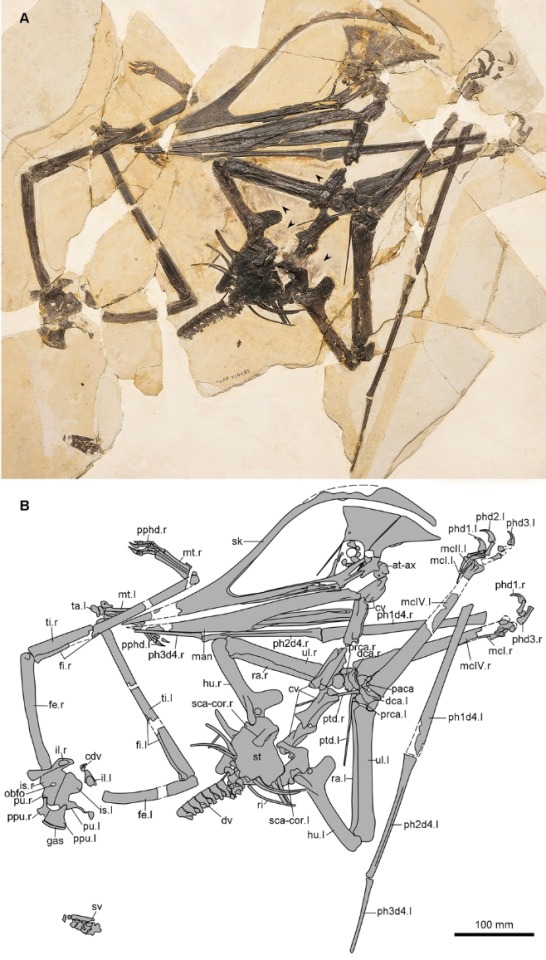
Photo and line drawing of Meilifeilong youhao holotype

Second known specimen of Meilifeilong youhao
Source:
12 notes
·
View notes
Text
Paleontologists analyzed five fossils of an early Cretaceous bird, Sapeornis chaoyangensis, in order to study how the environment they were buried in changed the preservation of their soft tissue.
The site of Jehol Biota in China is famous for stunning fossils which preserve soft tissue—skin, organs, feathers, and fur.
The most likely explanation for how well the fossil is preserved is that the bird was swept away by a rainstorm and rapidly buried at the bottom of a lake, where a restricted burial environment ensured it wasn't disturbed. It is unlikely that it was from volcanic activity Since fossils in pyroclastic flows don't preserve soft tisdue
Discovery of five specimens of early bird Sapeornis chaoyangensis
The Jehol Biota, one of the most important Mesozoic fossil Lagerstätten, comprises extraordinary taxonomic diversity of micro- and megaplants, invertebrates, and vertebrates; moreover, it provides the most informative source for understanding Mesozoic ecology.
Fossil soft tissues contain important and irreplaceable information on life evolution, and on the comprehensive understanding of the nature of Mesozoic ecosystems. Compared to other fossil soft tissues, Jehol Biota feathers are more commonly reported. However, taphonomic analysis of these feathers is lacking. Here,
#paleontology#fossil#mesozoic#birds#feathers#science#biology#article#scientific research#discovery#scientific paper#scientific discovery
4 notes
·
View notes
Video
youtube
Ever wanted a song about the Jehol Biota? Well, there's one now! Topic suggested, fact-checked, and featuring a drawing by me. Between my pedantic nitpicking and Amazon's incompetence, John had to put up with a lot to make this one. You, too, have the chance to get a song written about a science subject of your choice, just leave a suggestion with Ensonglopedia!
53 notes
·
View notes
Link


An article published in the journal "Current Biology" reports the study of a specimen of a small feathered dinosaur belonging to the species Microraptor zhaoianus which is not only almost complete but still contained in its stomach the remains of a lizard belonging to a species that was still unknown and was named Indrasaurus wangi. A team of paleontologists led by Professor Jingmai O'Connor of the Chinese Academy of Sciences examined the remains of the two animals that lived about 120 million years ago in today's China and, also based on three previous discoveries of Microraptor with a preserved prey in their stomach, confirmed the theory that this type of dinosaur was an opportunistic predator.
#paleontology#evolution#feathered dinosaurs#Microraptor zhaoianus#Indrasaurus wangi#Cretaceous#Jehol Biota
2 notes
·
View notes
Text
Daurlong wangi Wang et al., 2022 (new genus and species)
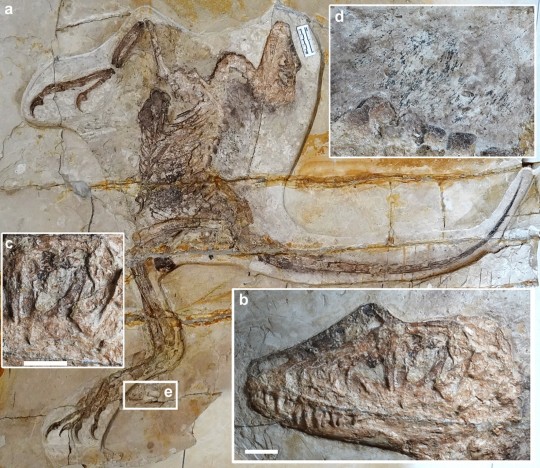
(Type specimen of Daurlong wangi [b: close-up of skull; c: close-up of eye socket; d: close-up of preserved feathers; e: frog skeleton preserved nearby; scale bars = 20 mm for b and 10 mm for c], from Wang et al., 2022)
Meaning of name: Daurlong = Daur dragon [in Chinese]; wangi = for Wang Junyou [director of the Inner Mongolia Museum of Natural History]
Age: Early Cretaceous (Aptian), about 121 million years ago
Where found: Longjiang Formation, Inner Mongolia, China
How much is known: Nearly complete skeleton of one individual with preserved feathers.
Notes: Daurlong was a dromaeosaurid theropod, making it a fairly close relative to Velociraptor and Deinonychus. It was especially similar to Tianyuraptor and Zhenyuanlong of the Jehol Biota (also from the Early Cretaceous of China). Like Tianyuraptor and Zhenyuanlong, it had relatively short forelimbs for its size, and was larger than most other Early Cretaceous dromaeosaurids that have been found in China, being about 1.5 m long in total length.
The type specimen of Daurlong not only preserves an exceptionally complete skeleton with feather remains, but also a dark mass in its abdominal cavity. In terms of shape and anatomical position, this mass resembles the preserved intestines of Scipionyx, a theropod known from a well-preserved juvenile specimen from the Early Cretaceous of Italy, and may therefore also represent preserved intestinal remnants in Daurlong.
Reference: Wang, X., A. Cau, B. Guo, F. Ma, G. Qing, and Y. Liu. 2022. Intestinal preservation in a birdlike dinosaur supports conservatism in digestive canal evolution among theropods. Scientific Reports 12: 19965. doi: 10.1038/s41598-022-24602-x
274 notes
·
View notes
Photo

🚨New research alert! A recent study led by Museum Curator Jin Meng has revealed two new burrowing mammal ancestors that were part of the Jehol Biota in northeastern China, which was home to a great diversity of life some 145 to 100 million years ago, from dinosaurs to insects to plants. The two new species of mammal-like, burrowing animals—members of a larger group called mammaliaforms from which mammals themselves emerged—are the first “scratch-diggers” discovered in this ancient ecosystem. 👋Let’s meet the new species: One, measuring about 1 foot (0.3 meters) in length, is a mammal-like reptile called a tritylodontid and is the first of its kind to be identified in this biota. It was given the name Fossiomanus sinensis. The other, named Jueconodon cheni, is a eutriconodontan, a distant cousin of modern placental mammals and marsupials. It’s about 7 inches (17 centimeters) long. Image: J. Meng/© AMNH; Fossiomanus sinensis on left, Jueconodon cheni on right (at American Museum of Natural History) https://www.instagram.com/p/CNisNm9Ahnm/?igshid=qm1bjkl1toms
336 notes
·
View notes
Text

A drawing of Nie Huaisang I did, based on an idea by @plotdesigner. His home in Hebei is somewhat close to the Jehol Biota, an Early Cretaceous terrestrial Lagerstatten (area of exceptional fossil preservation), which has yielded a number of beautiful fossils of feathered dinosaurs and early birds. Fossil birds especially seem to fit well with his themes, so we took that idea and ran with it. I may not have finished The Untamed yet but I do still love him and also I have been extensively spoiled for it sO,
(Please click for better quality! I didn’t draw all those sleeve details for nothing!)
#nie huaisang#nhs#the untamed#horusart#the fossil in question is very very loosely based on confuciusornis (early bird)
158 notes
·
View notes
Text
Excerpt:
Vinther walks me over to his prized possession, and talks me though its backstory.
It's the Early Cretaceous in the Jehol Biota – an ancient ecosystem in northeastern China. Let's say it's a beautiful sunny day in this temperate land, and the little psittacosaurus decides to leave her densely forested home to go for a drink in one of the area's many lakes. She's around three feet (91cm) long from head to tail – reminiscent of an unusually stocky Labrador – and nearly a full adult, but she's still inexperienced.
The psittacosaurus potters over to the water's edge on two feet – she stopped walking on all fours as she got older – but then tragedy strikes. Just as she's leaning down for a sip with her parrot-like beak, she slips, falls in and drowns. As she plunges to the bottom of the lake, she ends up inelegantly splayed on her back – accidentally preserving her genitals for future apes to wonder over.
9 notes
·
View notes
Text
critters of the Yixian
critters of the Jiufotang
#jehol biota#dinosaurs#birds#prehistoric life#palaeoblr#pterosaurs#yixian formation#jiufotang formation
44 notes
·
View notes
Note
i wanna see the microraptor aviary :D
Oh boy!!! So I'm not actually that good at the modular building systems in park builder games (despite my hundreds of hours in Planet Zoo I've mostly stuck to the prefab buildings and decorations) so the main structure of it is pretty basic using the existing building pieces, but I tried to add some stuff inspired mostly by the small mammal and bird house at my local zoo, the Smithsonian. The little feeding trough type thing in the front is made out of bits of drainage pipe props, and I added air conditioning and kept it mostly shaded because I chose to build a tropical zoo and the Jehol biota was cooler and drier than modern day Costa Rica! (This has no gameplay effect atm, I just liked the thought.)
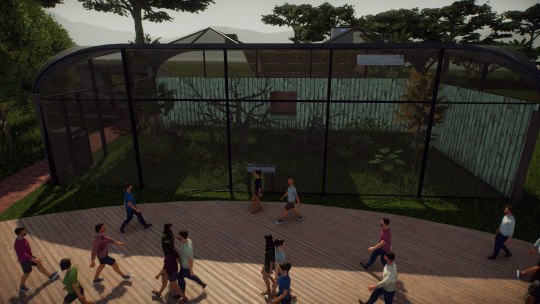
Off to the side and behind there's a little airlock door for imaginary staff access, along with one of the utility shed prefabs the game has because I really like em, plus some trees and plants as a screen.

And then what I'm happiest with is the off-exhibit area in the back, with perches and some little nest boxes I built.
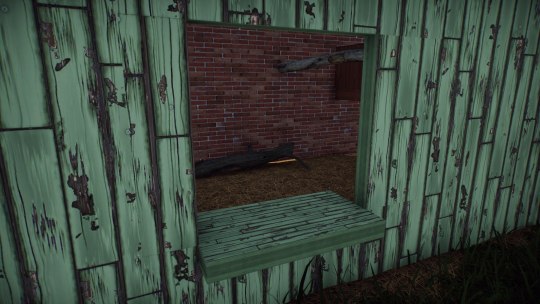
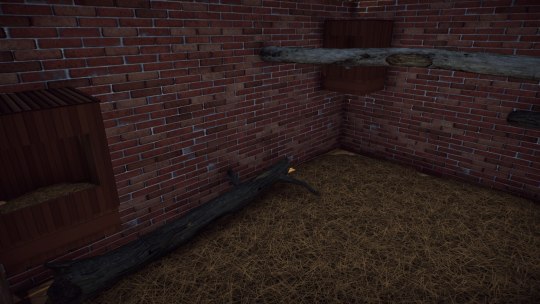
They won't actually go back there, but they're so danged cute they're worth it anyways.

#my posts#asks#taniushka12#i am absolutely going to learn to use all the ridiculous rotation tools for this game
7 notes
·
View notes
Photo

This is a penciled portrait of Yutyrannus huali, a large proceratosaurid dinosaur which hunted in northeastern Asia around 125 million years ago, during the Early Cretaceous Period. I wanted my portrayal of the animal to have a snow leopard-like appearance here, since it and other dinosaurs of the Jehol Biota appear to have lived in an alpine environment with a relatively cool climate (cool, in the context of the Mesozoic Era, being what we would call temperate today).
#Yutyrannus#proceratosaurid#dinosaur#feathered dinosaur#prehistoric#mesozoic#cretaceous#paleoart#drawing#traditional art#art
11 notes
·
View notes
Text
welcome to hydraulic press channel today we will be crushing: jehol biota

2K notes
·
View notes
Link
“In Hinduism’s Vedic mythos, the deity Indra does battle with a dragon that swallows Indra whole. Now, scientists have found a strikingly similar tale captured in the fossil record: a newly recognized species of lizard that met its end in the belly of a glimmering dinosaur.

Named Indrasaurus wangi as a nod to the mythical encounter, the unfortunate reptile was found within the abdomen of a feathered dinosaur known as Microraptor. The fossil of this four-winged dinosaur was itself unearthed from the 130-million-year-old Jehol biota, a treasure trove of Cretaceous-period fossils in what’s now northeastern China.”
#Palaeoblr#Indrasaurus#Indrasaurus wangi#Theropod#Dinosaur#Cretaceous#Mesozoic#Extinct#Prehistoric#Link#Article#Info#Information#Photo#Fossil#Art
225 notes
·
View notes